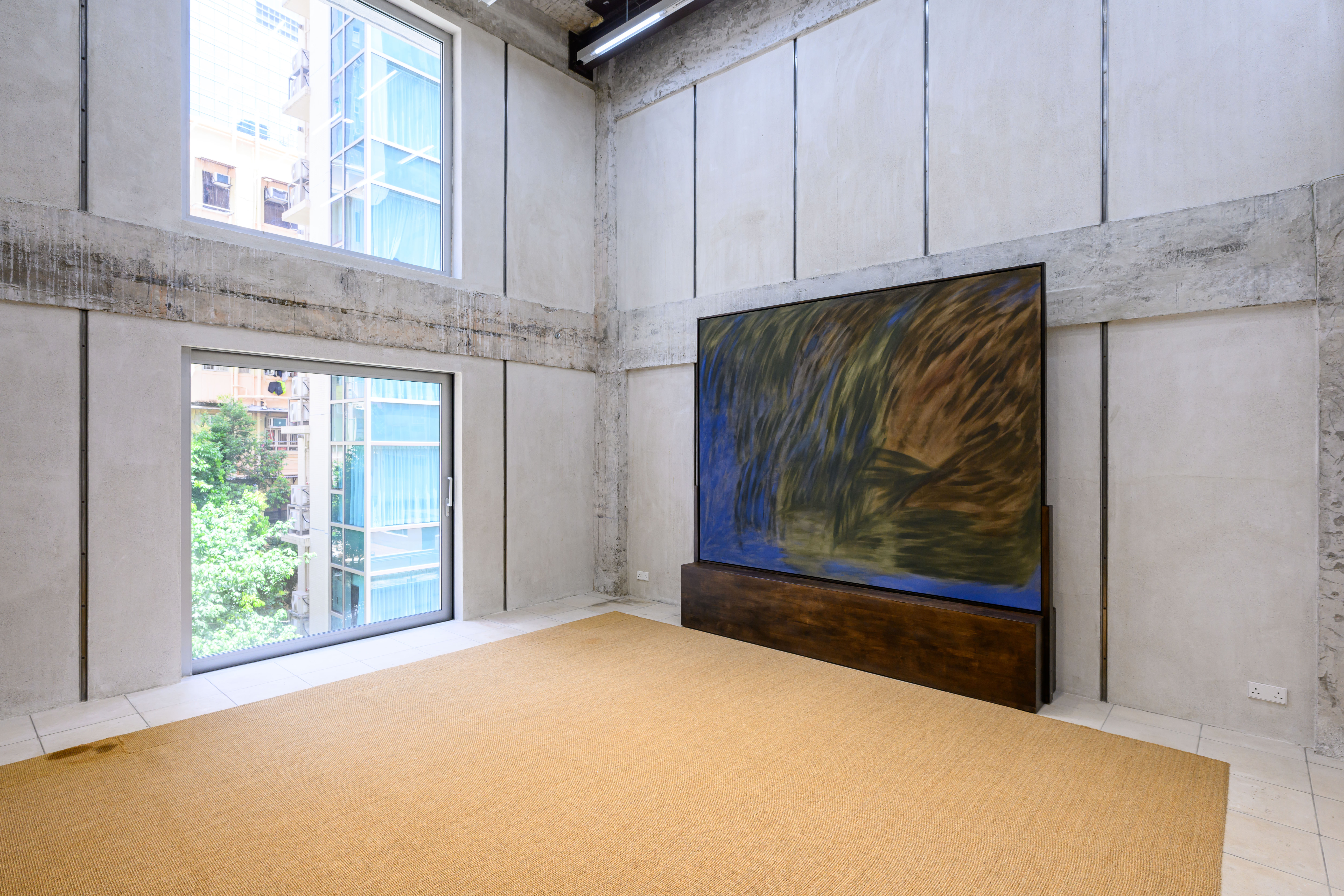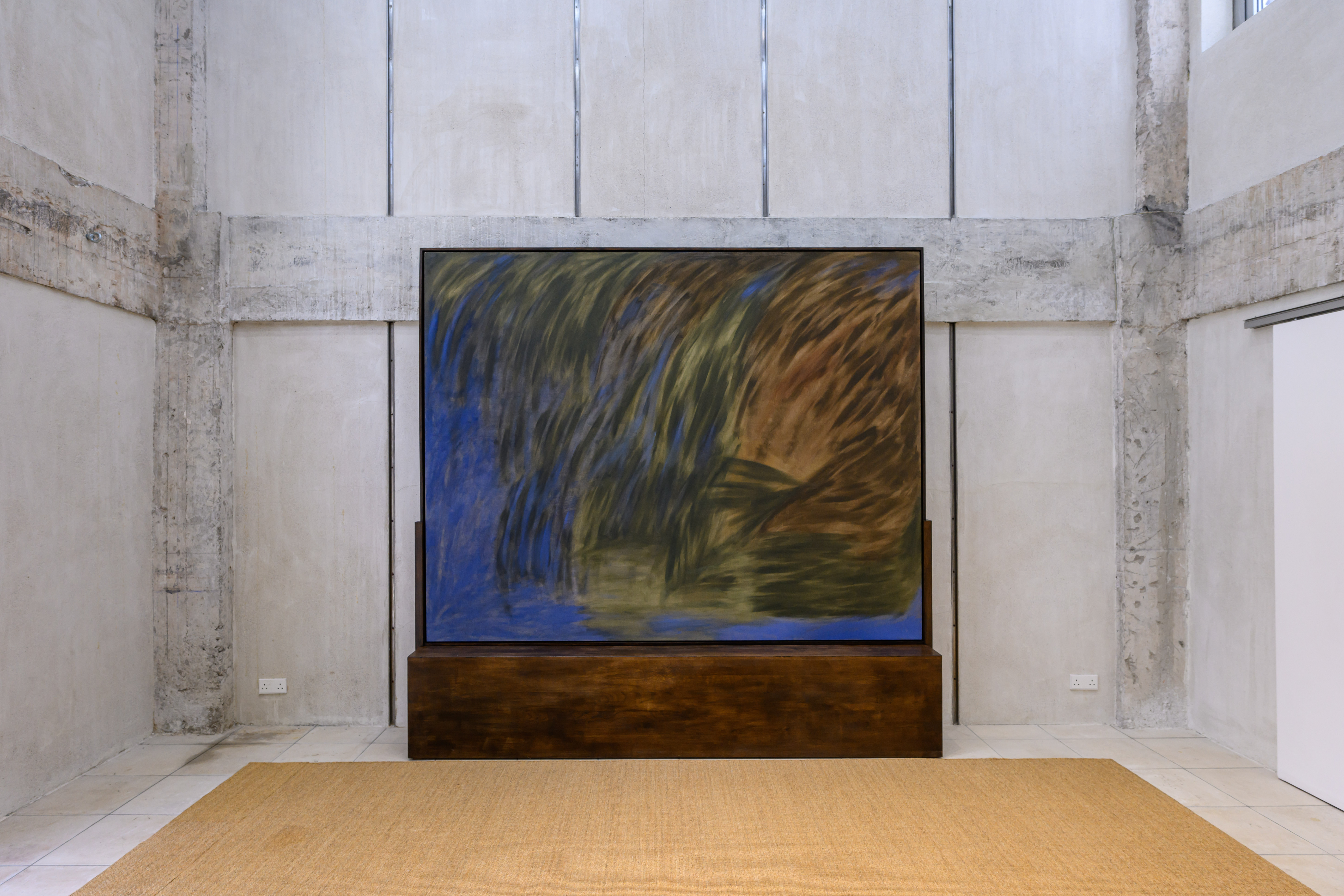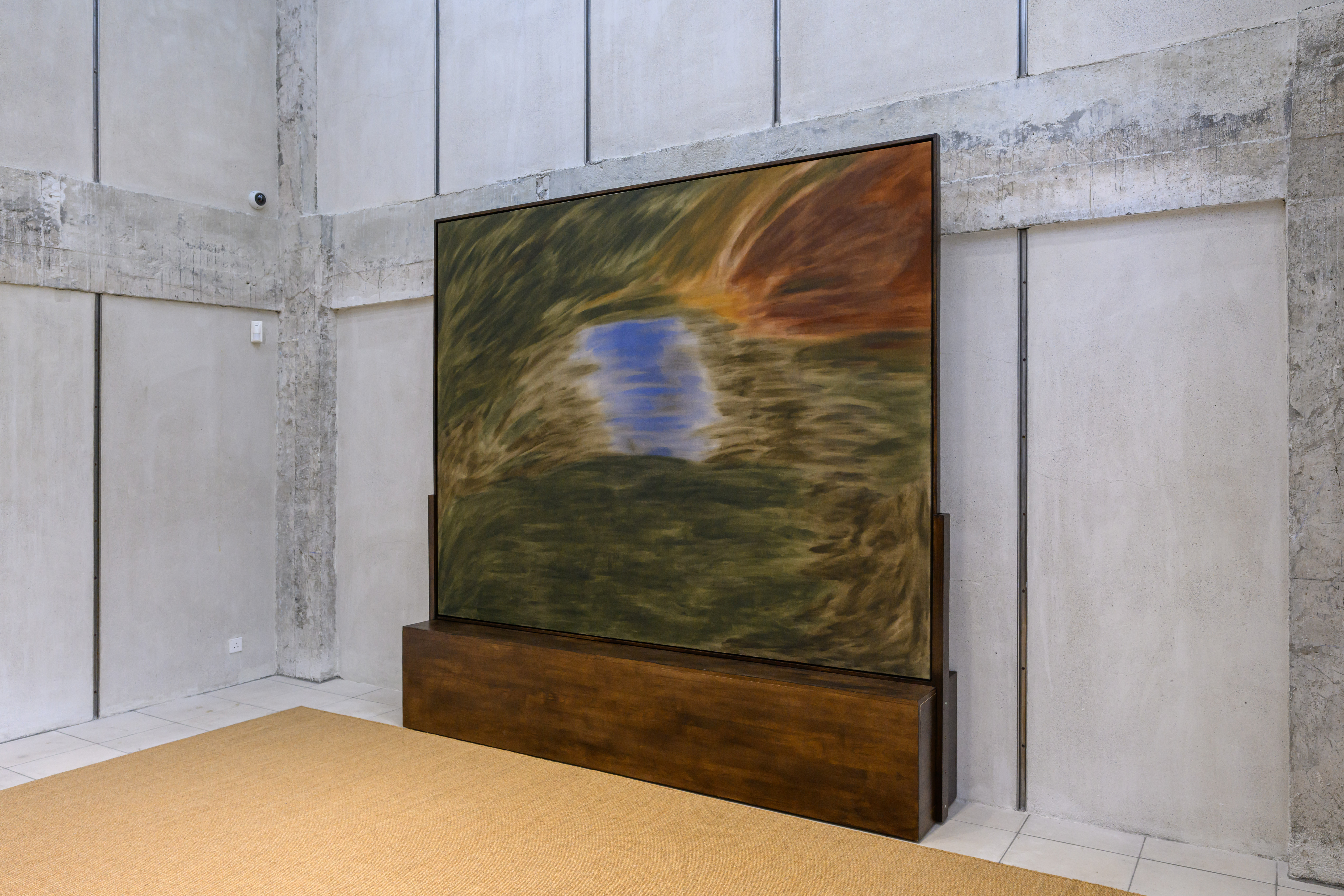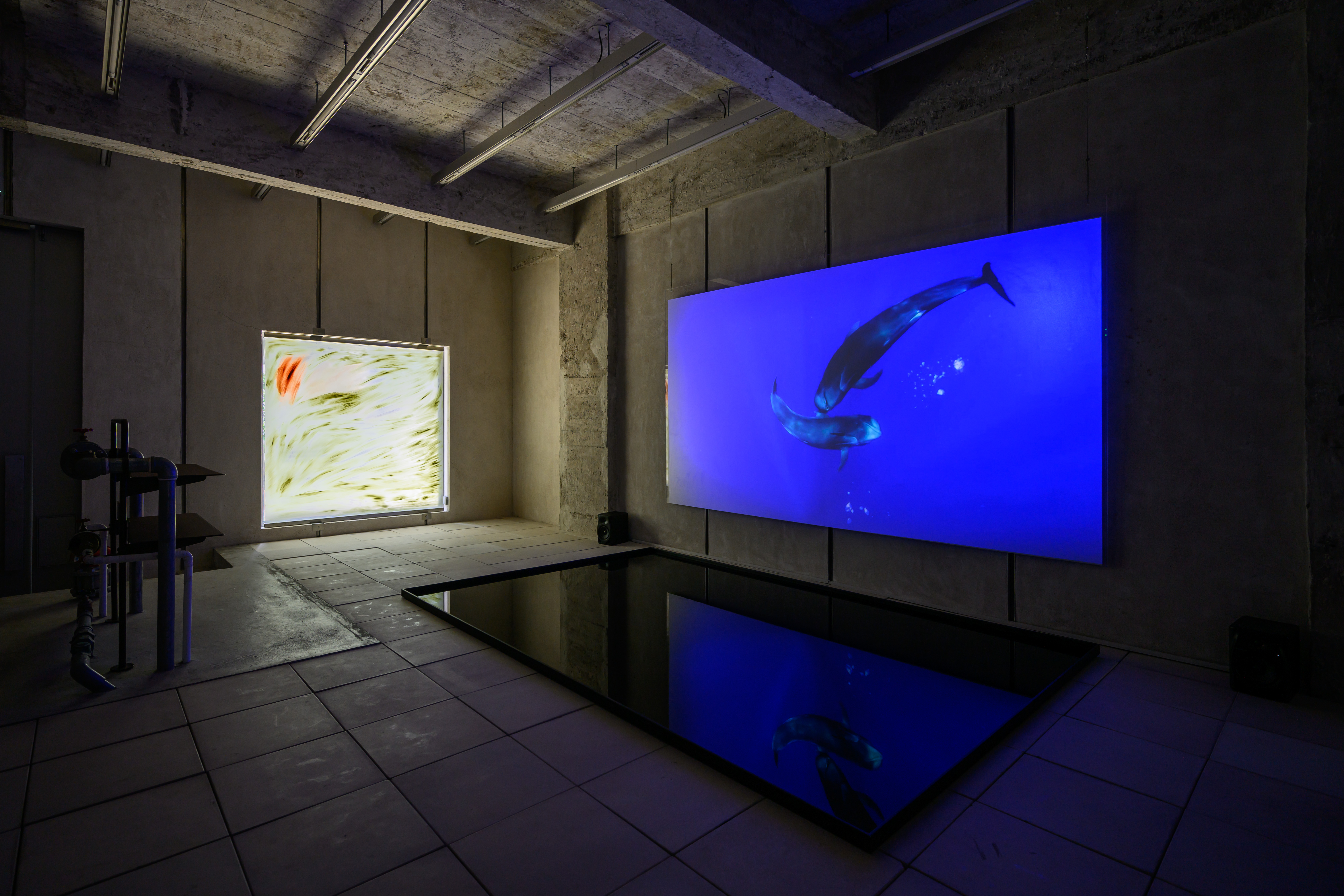1. From afar, Dominique Knowles’ paintings look like soft animal hide I could sink my face into. “Just go by what you experience and feel,” he says, when I ask how I should approach his art. Swathes of afternoon orange, marred by flecks of black like small slits of the void. A featureless being plunging face-first into an icy pool. Knitted walls that open up to a sky, blue as a balm against the encroaching fire. A stain of blood against a blinding canvas of light. That these works are titled My beloved only adds to the unease. What was it that he was mourning? What was I mourning?
2. Dominque didn’t know where home was. He had lived in Chicago, Paris and Florida, and these days he was in various art capitals around the world for months at a time, the kind of vagabond life that looked enviable from a distance but became unmooring after a while. (Had he said this, or was I projecting?) For a long time, home was where his horse Tazz was, in his native Bahamas. Tazz had been a constant companion to the artist since he was four – he felt he had manifested him by making miniature horse sculptures before he even had his own horse. It was his first experience in creating art to fulfil his heart’s desires. Then, in 2021, in the midst of the pandemic, while Dominique was away, Tazz’s body started failing. Dominique flew from a horse show in Florida back to the The Bahamas and made the difficult decision to euthanise him. “If I had been there,” he said, “I wondered if Tazz would have stayed alive.”
3. “Died of a broken heart. There’s nothing else you can say, really.” I brush the ash from your cheek, smear it across my tongue. For a year, I lived in a house between a cemetery and a suicide bridge. My apartment was haunted by the woman who had died just a month before I moved in, and I kept getting all her mail. I offered these facts to friends as though it was a joke, but really, I had hoped living among the dead would render me more alive. Instead, I faded against the landscape, translucent and sopping.
4. The first time I met Dominique Knowles, he had just woken up from a nap in the Lamma village house in which we had both found ourselves. He had stayed up all night on a call with a beloved friend several time zones away, and was in the city because he had been commissioned by a gallery to paint a wall. Soon he was worn out by the heavy crowds and the spiny skyscrapers; he craved the water and trees of The Bahamas, and moved out to the island. He asked me about the two books I had left on the dining table – Derek Jarman’s Blue and Etel Adnan’s Sea and Fog. They were my talismans, I explained. Lamma was my blue island. Within the first hour we had covered attachment theory, Zadie Smith, the nature of intimacy, and the mushiness of time during moments of political and public health crises. Later, when I asked the artist about his latest obsessions, he sent me an article about the Mishaka Pond in Japan’s Nagano Prefecture, where the waters were so clear the surrounding trees were mirrored onto the surface. I didn’t understand until I looked up Kaii Higashiyama’s painting Midori Hibiku (1972). There it was, between rows of towering trees and their reflection – a majestic white horse, trotting across the woods.
5. “With horses, you have to be very zen,” Dominique Knowles says. “Horses can recognise your feelings but they don’t understand why you have them. A horse can hear your heartbeat from 1.2 meters away.” The animals mimic each other’s movements to guard themselves from predators. In that sense, they are perfect mirrors, a reflection of the outside world. “Picture a horse’s heartbeat in the center of the herd in a field – radiating outwards to the horse at the edge of the forest of trees.”
6. Dominique Knowles was dressed in mourning tones of black, standing in front of an inferno he had created. Among the nineteen photographs I took of him that day, on the second day of Hong Kong’s art fair of the year, he is smiling in just four of them. He is aware of the artist persona he has to maintain, though he performs it with a note of irony. Even in casual conversations, he speaks with the measured pace of a writer. Sometimes he wishes the art world would put on fewer exhibitions and organise symposiums instead. He doesn’t particularly care what pronouns you use for him, though elsewhere he has described his work as “metaphors for queer desire”. The performance is Dominique’s way of both meeting and betraying the audience’s expectations. A teacher once told him: “The way you move through the world doesn’t have to be your truth.” His paintings are tender but violent, like the poems of Franny Choi. He is always reaching towards a soft death. Later, when he sent me a screenshot of Noriyuki Haraguchi’s Oil Pool, all I saw was a gleaming, bottomless well of black grief.
7. The island is a self-intervention – the grief was boring me. Lilac morning glories turn stupidly towards the sun. I strip down to my underwear and run into the cradle of the water. The place where light could no longer reach the ocean is the midnight zone. Back at home I show you my bruised knee, and you press your lips against my blue-black skin.
8. My beloved, my beloved, my beloved, my beloved, my beloved. Say it once and it remains an expression of adoration; say it five times and it becomes an incantation to summon what has been lost. “I would go into the work thinking of a burial, but it would come out a resurrection,” Dominique Knowles once said in an interview with Elephant Magazine. Ghosts dominate in two of the canvases – a horse depicted in sensual brushstrokes of chestnut, and a figure in white that could be his grandfather, a poet who often invoked the phrase for all that was around him, even stray dogs. At his funeral, a line of mourners formed from the cathedral to the cemetery, all crying out, my beloved! What he called people endearingly, Dominique said, became his name eternally. Are the figures emerging from, or walking into the flames? Who is left here to gather the things we lost in the fire in the ruthless morning?
9. I drift from street to street, retrieve the remaining evidence and bury it between my ribs. The grief has no name. Or rather it did, once upon a time, but it’s since been redacted. The mass has congealed and I knead it until a head takes shape. My beloved, I say. My beloved. That is not what I wanted to call the absence, but it will do for now.
By Karen Cheung
(About Dominique Knowles)
Dominique Knowles (b. 1996 in The Bahamas) lives and works in Chicago and Paris. Knowles received both his MFA in Painting as a New Artist Society Award scholar in 2020 as well as his BFA in 2017 from The School of the Art Institute of Chicago. Recent solo exhibitions include Hannah Hoffman Gallery, Los Angeles (2023); “The Solemn and Dignified Burial Befitting My Beloved for All Seasons”, Andräkirche Salzburg, organised by
Layr, Salzburg (2023); Chapter NY, New York (2022); “The Solemn and Dignified Burial Befitting My Beloved for All Seasons”, Galerie Emanuel Layr, Vienna (2021); “The Sun Sinks”, Soccer Club Chicago, Chicago (2020); “Ode to Tazz”, The Green Gallery, Milwaukee (2019). His work will be on view at the 15th Gwangju Biennale “Pansori – a soundscape of the 21st century”, and has been included in numerous recent group exhibitions, such as: “Songs for the Changing Seasons”, Klima Biennale Wien, Vienna (2024); “Looking Back / The 12th White Columns Annual”, White Columns, New York (2023); “The Animal Within – Creatures in (and outside)”, mumok, Vienna (2022); “Portals”, Misako and Rosen, Tokyo (2022); “Fifteen Painters”, Andrew Kreps Gallery, New York (2021) amongst others. Knowles has participated in a residency at The Suburban (Milwaukee, WI) and has curated a group exhibition at The Condo Association (Chicago, IL). His work is in the permanent collections of mumok, Vienna and the Museum of Modern Art, Warsaw.
The Solemn and Dignified
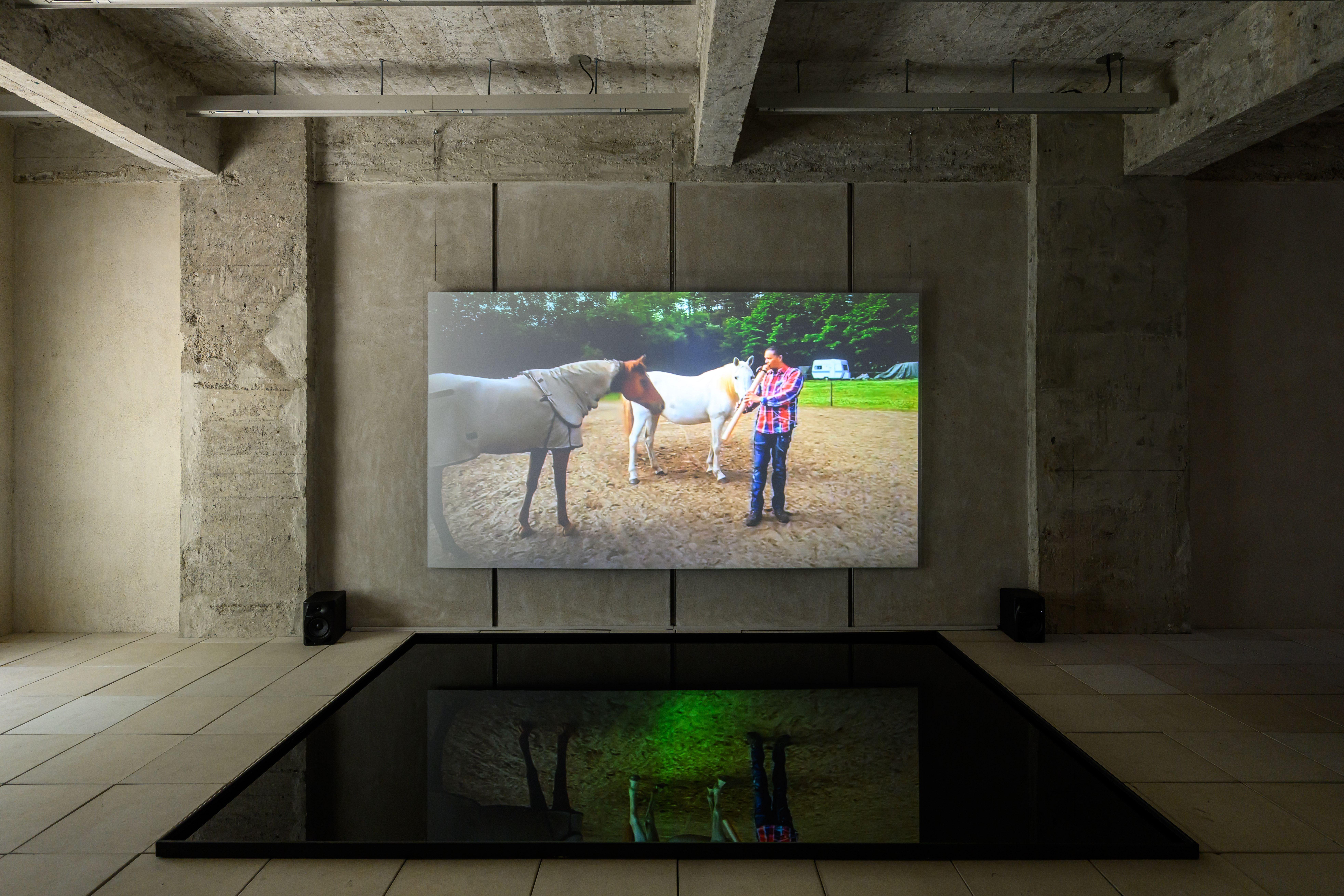
Video
12 min 07 sec
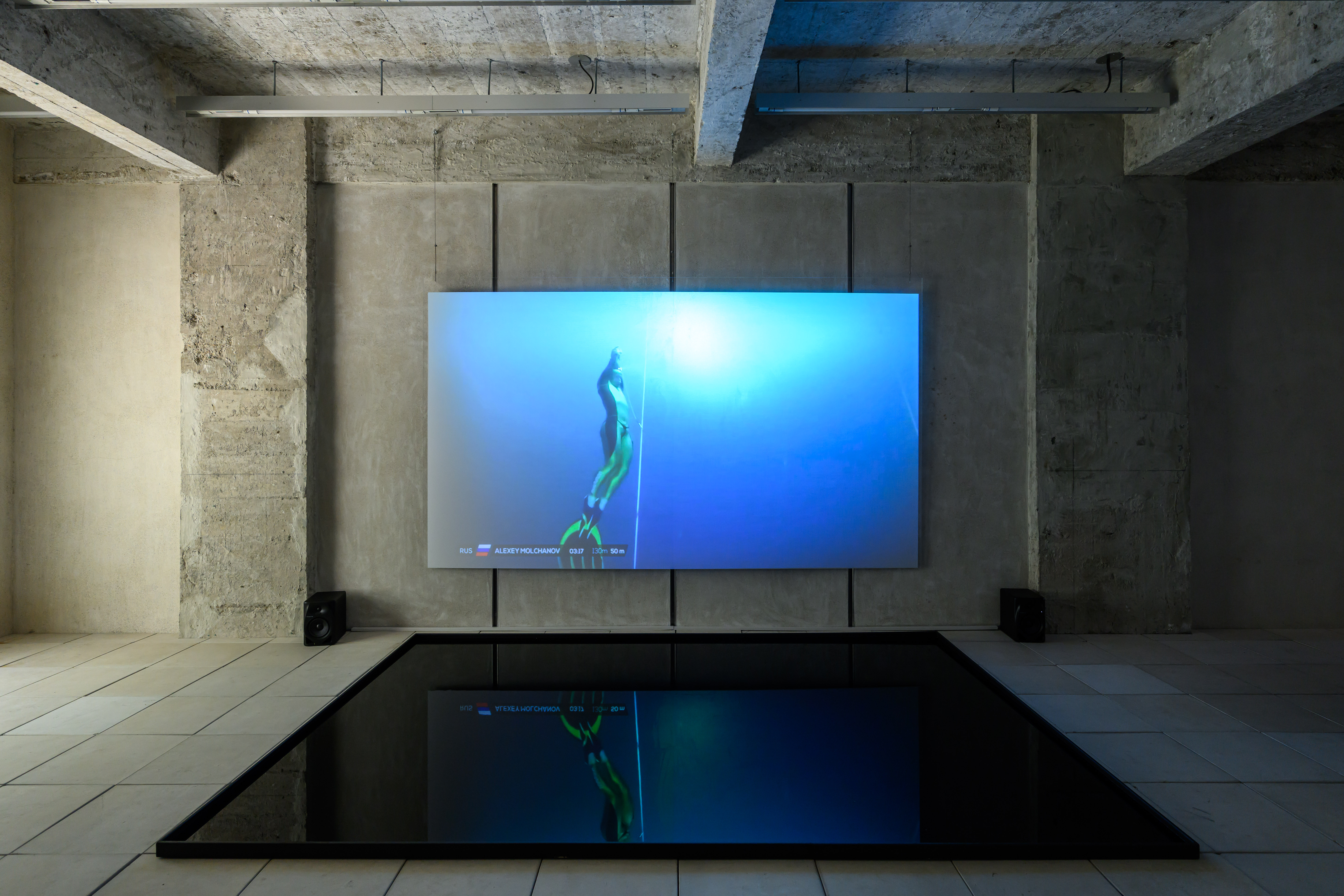
Video
12 min 07 sec
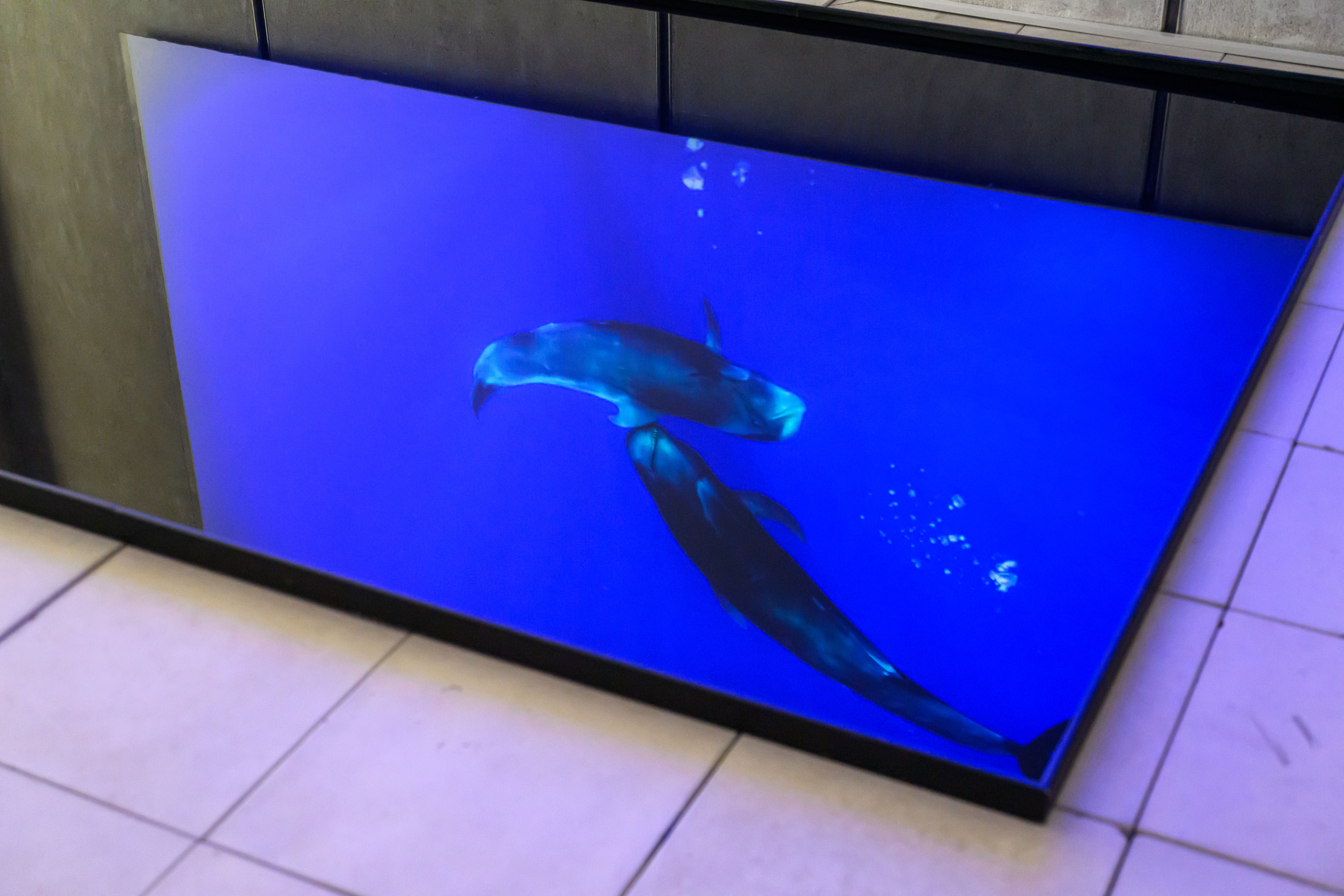
Video
12 min 07 sec
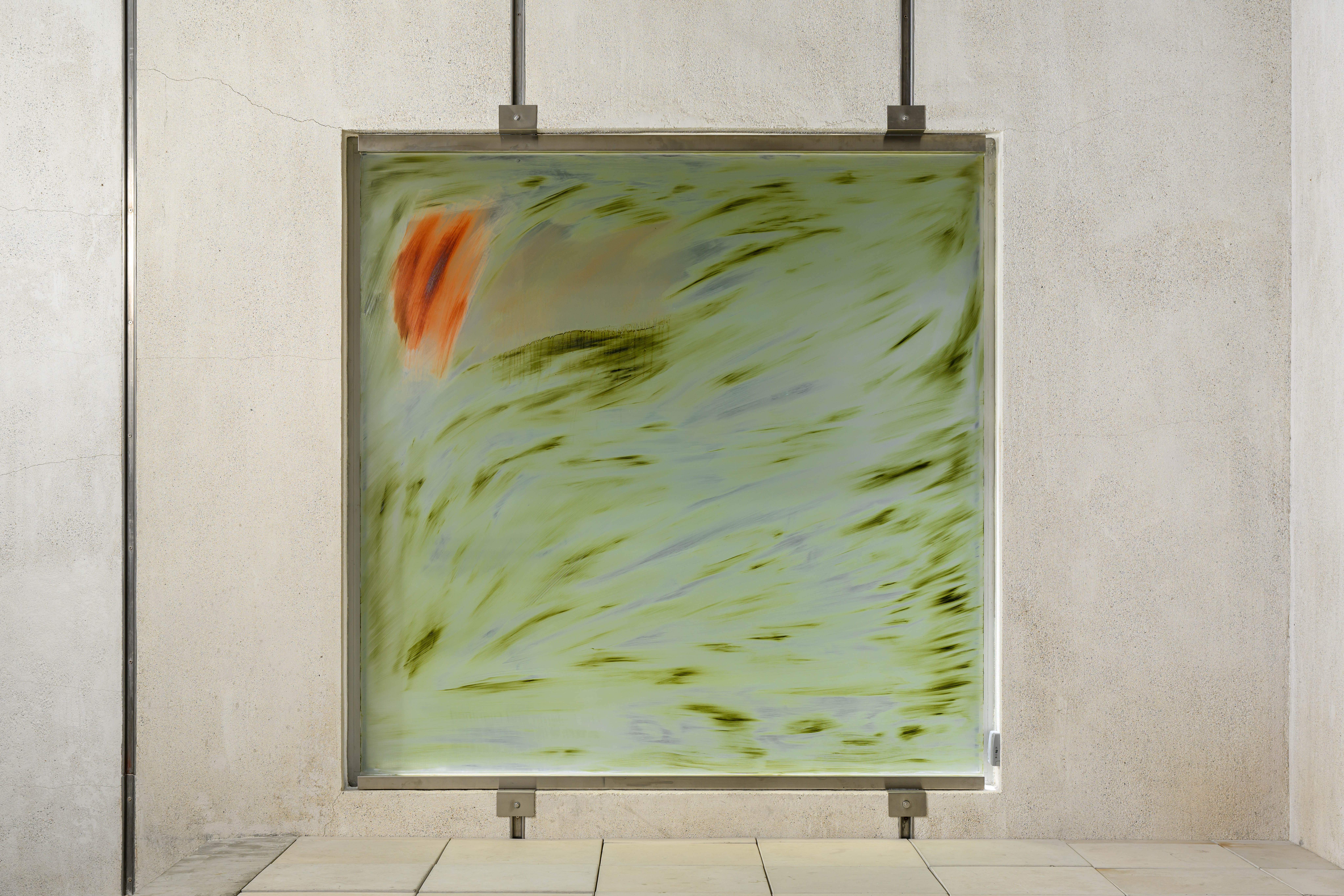
Oil on glass
175 x 167.5 cm
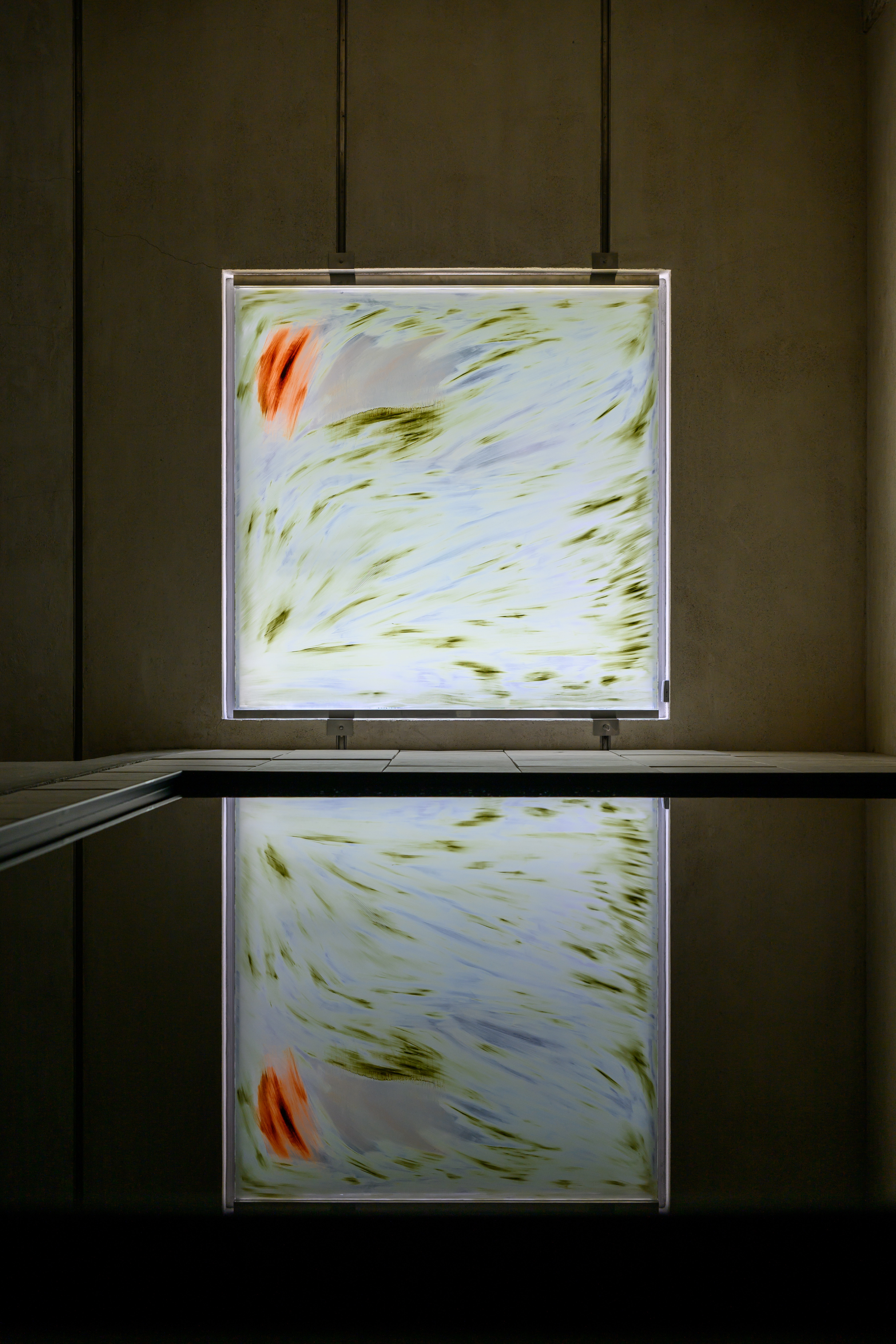

Oil on linen
256 × 91 cm
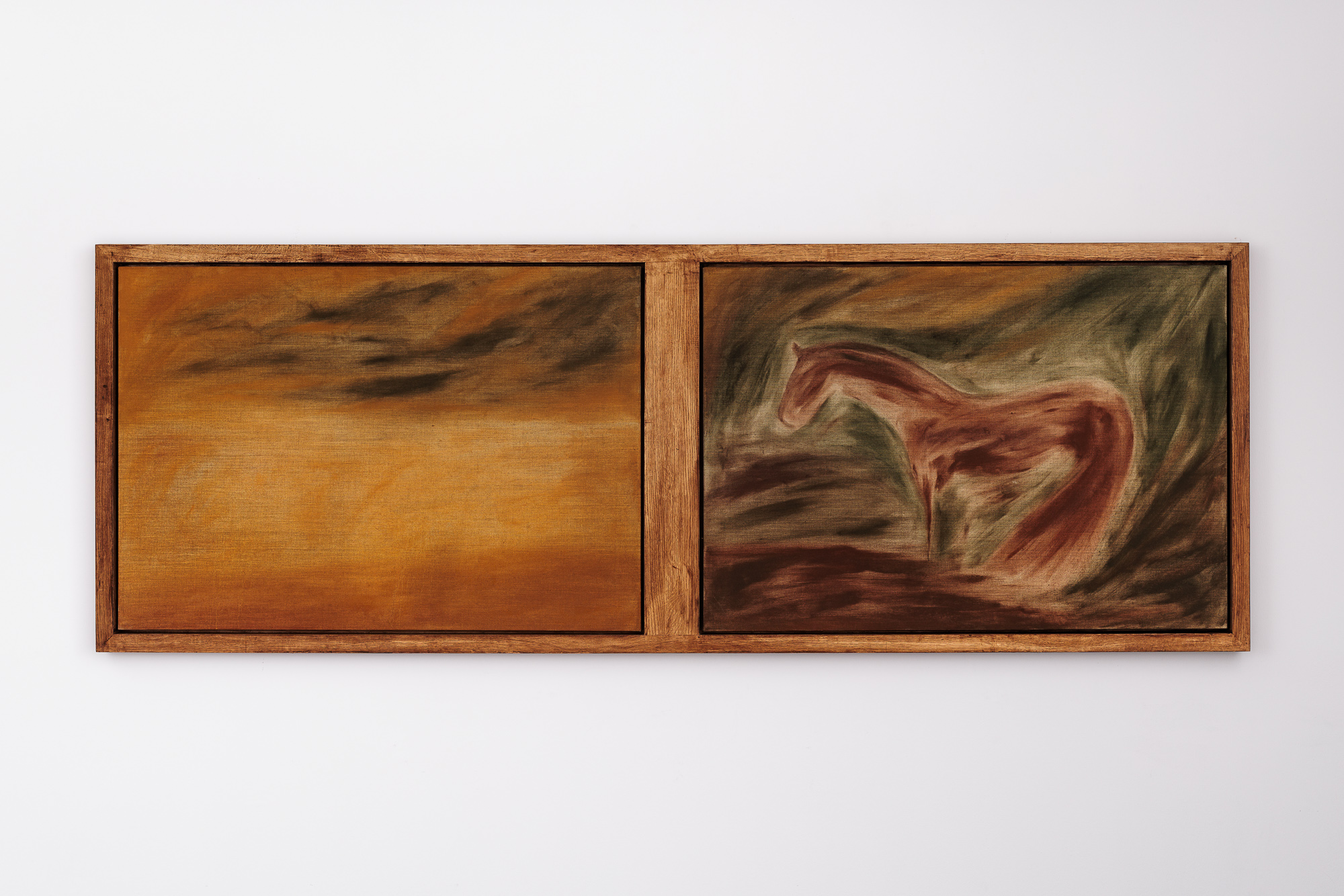
Oil on linen
256 × 91 cm
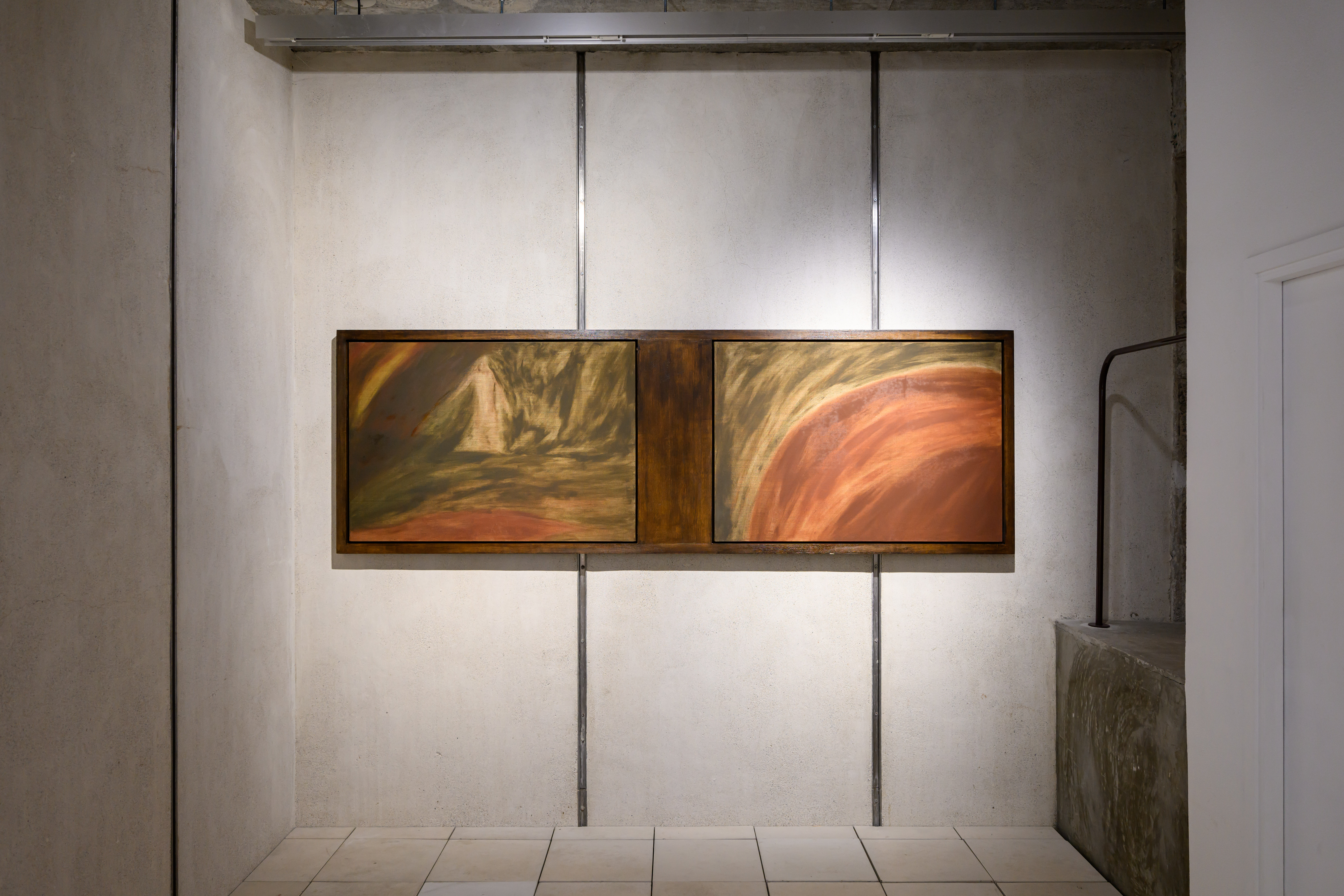
Oil on linen
275 x 91 cm
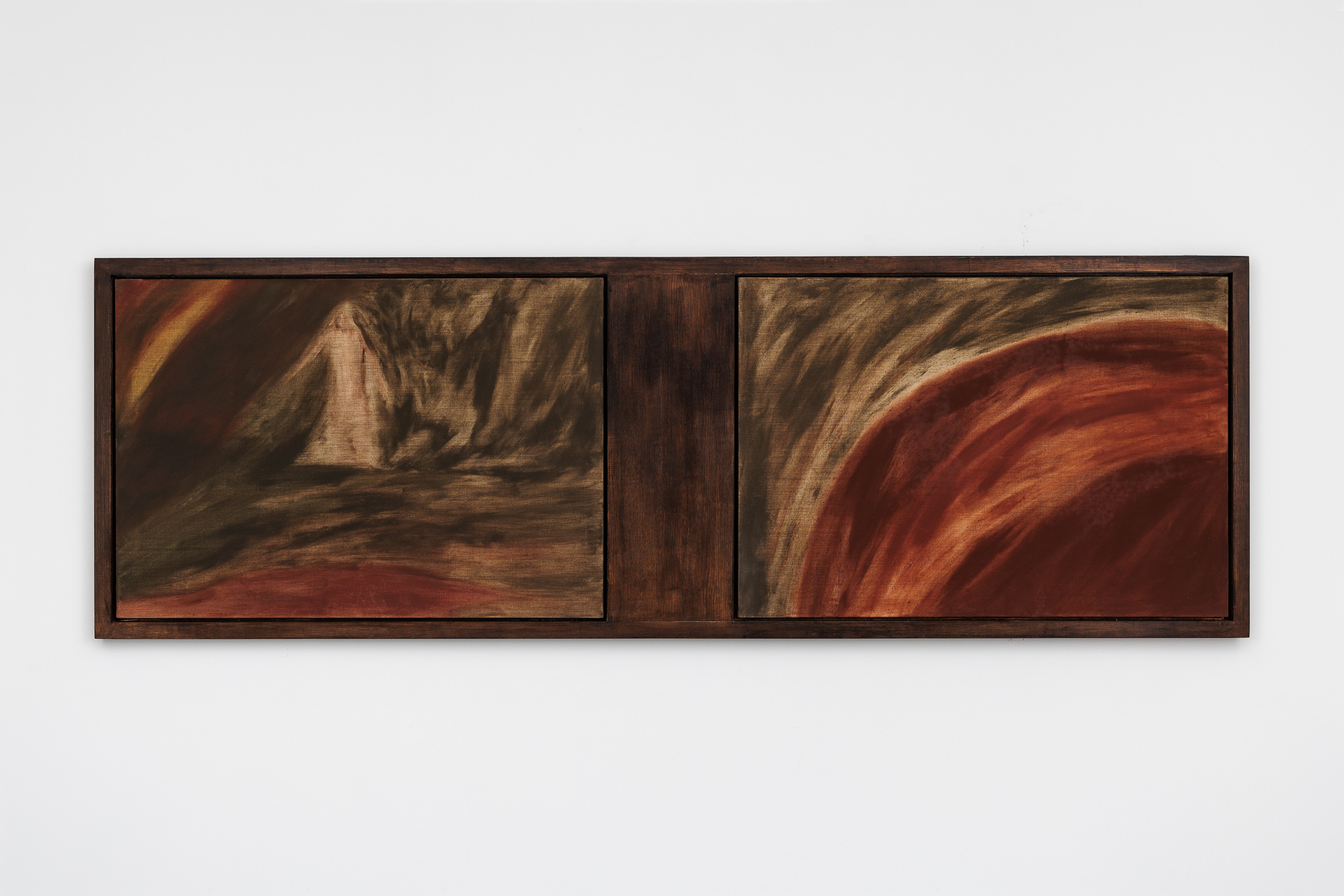
Oil on linen
275 x 91 cm
